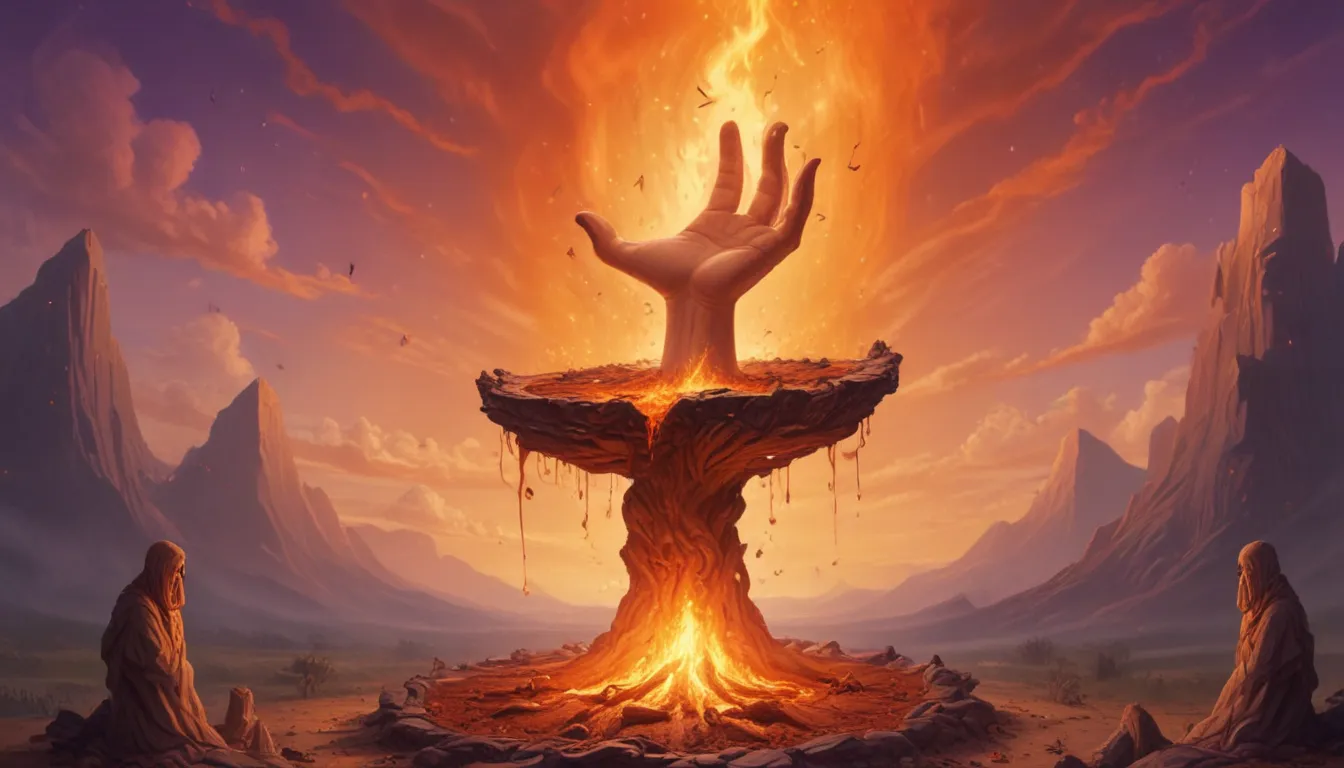
The burnt offering is a significant practice in many religions, particularly in Judaism and Christianity. It holds profound spiritual meaning and has been used as a tool for atonement and communion with the divine for centuries. In this comprehensive guide, we will delve into the spiritual significance of burnt offerings, their symbolic meaning, and how they have been understood throughout history.
What is a Burnt Offering?
A burnt offering, also known as an olah or holocaust, involves offering an animal (usually a male without defects) to God as a complete sacrifice. The entire offering would then be consumed by fire on the altar, symbolizing the total surrender and devotion of the worshiper to their deity. This practice was common in ancient Israel and is mentioned several times in the Hebrew Bible, particularly in the Book of Leviticus.
Spiritual Significance of Burnt Offering
The spiritual meaning of a burnt offering lies in its symbolic representation of complete devotion to God. By burning the entire animal, the worshiper demonstrates their willingness to surrender everything they possess to their deity. This act of sacrifice serves as a powerful reminder that nothing can be held back from God—a testament to the depth of one’s faith and commitment.
Atonement and Forgiveness
One of the primary functions of burnt offerings was to atone for sins committed by individuals or communities. By offering a burnt sacrifice, the worshiper could seek forgiveness from God and cleanse themselves of guilt and impurity. The act of burning the offering symbolizes the destruction of one’s transgressions, allowing them to start anew with a clear conscience before their deity.
Communion with God
A burnt offering also served as a means of communion between the worshiper and God. By offering up a sacrifice, the individual could draw nearer to their divine presence and strengthen their connection to the spiritual realm. This act of sacrifice helped to cultivate a deeper sense of reverence and awe for the sacredness of life.
Thanksgiving and Praise
Burnt offerings were not only offered as atonement but also as an expression of thanksgiving and praise. By offering a burnt sacrifice, worshipers could demonstrate their gratitude to God for blessings received or simply express their love and devotion towards their deity. This act of thanksgiving served to strengthen the bond between the worshiper and their divine creator.
Symbolic Meaning of Burnt Offering
The burnt offering carries several symbolic meanings, which help to deepen our understanding of its spiritual significance:
- Surrender: The act of burning the entire animal represents a total surrender to God’s will and plan. It signifies that we are willing to give up everything in pursuit of a deeper relationship with our deity.
- Atonement: By offering a burnt sacrifice, worshipers sought forgiveness for their sins. This act symbolizes the need for repentance and the desire to make amends for past wrongdoings.
- Communion: The process of burning an offering creates smoke that rises towards heaven. This ascending smoke serves as a reminder that our prayers and offerings ascend to God, connecting us with the divine realm.
- Sacrifice: The burnt offering is a symbolic representation of self-sacrifice and the willingness to give up worldly possessions for the sake of one’s faith.
- Transformation: The burning of the animal offers represents the transformative power of sacrifice. Through this act, worshipers could experience personal growth and spiritual transformation.
The Practice of Burnt Offering in Different Religions
While the practice of burnt offering is most closely associated with Judaism and Christianity, it has also been adopted by other religions throughout history:
Hinduism
In Hinduism, a similar practice called “Hawan” involves offering flowers, grains, or ghee (clarified butter) into a sacred fire. This ritual serves to honor various deities and seek their blessings for personal fulfillment and spiritual growth. The act of burning these offerings symbolizes the destruction of negative energies and the purification of one’s soul.
Buddhism
In Buddhism, practitioners often light incense sticks or candles as an offering to Buddha, Dharma, and Sangha (the three jewels of Buddhism). These offerings are seen as symbolic representations of the practitioner’s willingness to let go of attachment and desire. By burning these material objects, they can focus on their spiritual journey without being hindered by worldly desires.
Ancient Greek Religion
In ancient Greece, sacrifices were made to the gods in the form of burnt offerings. These rituals involved offering animals (usually livestock) on an altar and then burning them to ashes. The practice was believed to honor the gods and seek their favor for personal success or protection from harm.
Conclusion
The spiritual meaning of burnt offerings has been a significant part of religious practices for centuries. As a symbol of total surrender, atonement, communion, thanksgiving, and sacrifice, these rituals have played an essential role in deepening the connection between worshipers and their deity. While the practice may differ across various religions, its underlying spiritual significance remains constant—a testament to our innate need for connection, forgiveness, and growth on our spiritual journey.





